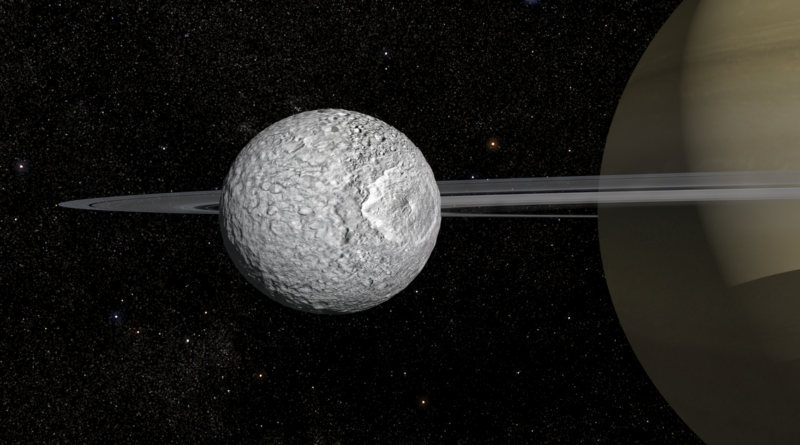Entire ocean may be hiding beneath surface of Saturn's 'Death Star' moon, experts say – The Mirror
Astronomers believe liquid water formed on Mimas, which is Saturn’s smallest and innermost moon, somewhere between five to 15 million years ago, making it much younger than Earth’s oceans
An entire ocean might be hiding beneath the icy surface of Saturn's "Death Star" moon, scientists believe.
Researchers say the ocean could be an ideal spot for studying the origins of life. They think liquid water formed on Mimas, Saturn's smallest and innermost moon, between five to 15 million years ago, while the Earth's oceans are thought to be more than four billion years old.
Mimas is often likened to the Death Star from Star Wars because of its large Herschel Crater, which looks like the space station's laser weapon. Despite no signs of activity, this small moon, about 400 kilometres in diameter, seems to have an ocean just 20 to 30km below its icy shell.
Dr Nick Cooper, honorary research fellow at Queen Mary University of London, said: "Mimas is a small moon, only about 400 kilometres in diameter, and its heavily cratered surface gave no hint of the hidden ocean beneath."
Dr Valery Lainey, the lead researcher from Paris Observatory in France, said: "This discovery adds Mimas to an exclusive club of moons with internal oceans, including Enceladus and Europa, but with a unique difference: its ocean is remarkably young, estimated to be only five to 15 million years old."
The expert added: "The existence of a recently formed liquid water ocean makes Mimas a prime candidate for study, for researchers investigating the origin of life."
An in-depth study was carried out by Valery and his team utilising information from NASA's Cassini spacecraft. Cassini dived into the mysteries of Saturn and its celestial kids for more than ten years before it bravely met its end on the planet in 2017. They meticulously spotted tiny changes in Mimas's orbital dance which clued them into a buried ocean while estimating its size and depth.
According to these space whizz-kids, their findings debunk the idea of a stony core inside Mimas. Their research evidence fits only one scenario that of omnipresent inner oceans. Behind this cherished revelation hides a bigger implication: even small and seemingly inactive moons can preserve mysterious oceans that foster conditions paramount for life creation.
Experts from the SETI Institute and Southwest Research Institute shared in Nature's News and Views: "The idea that relatively small, icy moons can harbour young oceans is inspiring, as is the possibility that transformational processes have occurred even in the most recent history of these moons." They also said: "Lainey and colleagues' findings will motivate a thorough examination of midsized icy moons throughout the Solar System."
Sign up to FREE email alerts with news to brighten your day




